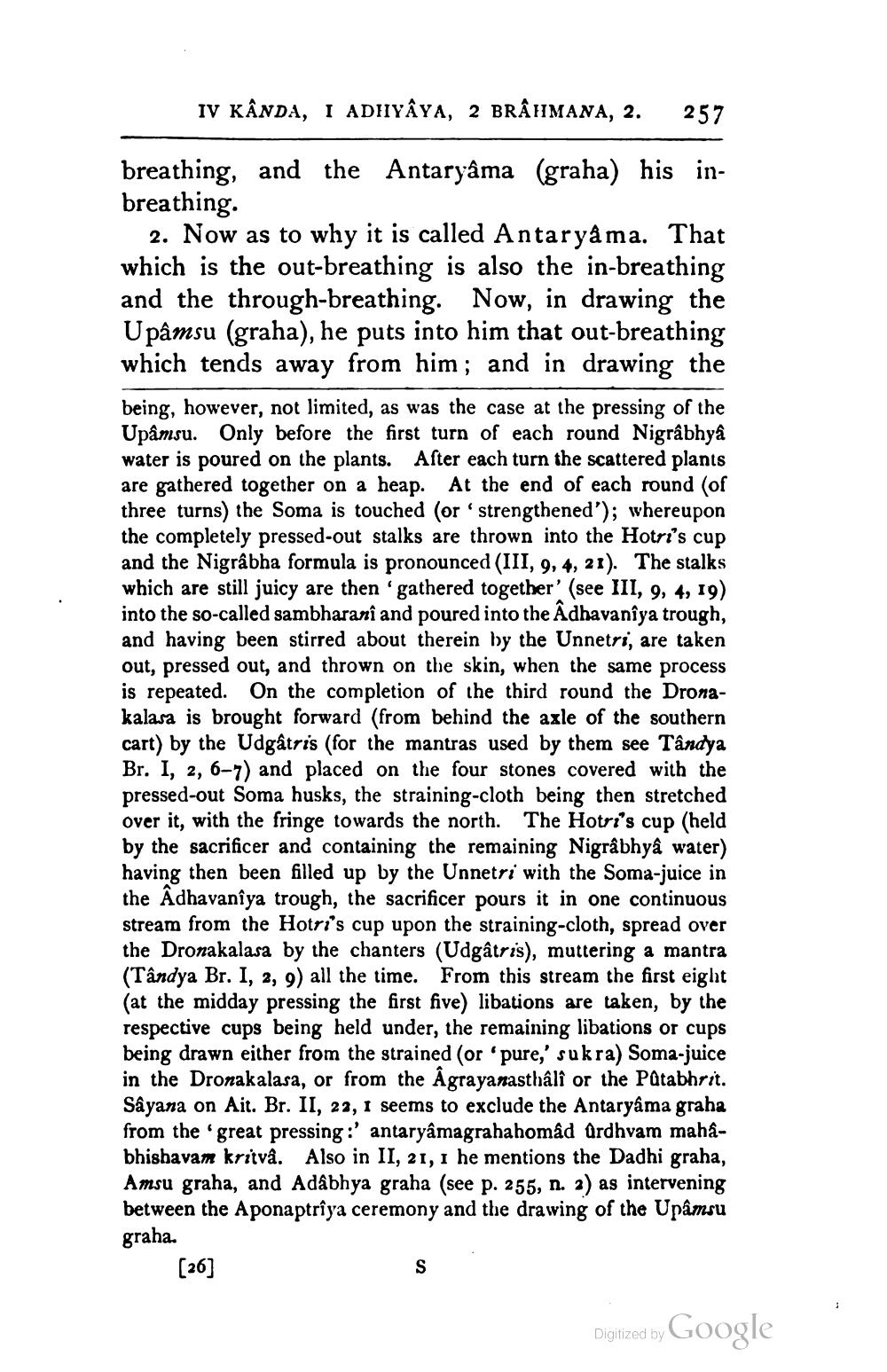________________
IV KÂNDA, I ADHYAYA, 2 BRÂHMANA, 2.
257
breathing, and the Antaryâma (graha) his inbreathing.
2. Now as to why it is called Antaryâma. That which is the out-breathing is also the in-breathing and the through-breathing. Now, in drawing the Upâmsu (graha), he puts into him that out-breathing which tends away from him; and in drawing the
being, however, not limited, as was the case at the pressing of the Upåmsu. Only before the first turn of each round Nigrâbhya water is poured on the plants. After each turn the scattered plants are gathered together on a heap. At the end of each round (of three turns) the Soma is touched (or strengthened'); whereupon the completely pressed-out stalks are thrown into the Hotri's cup and the Nigrâbha formula is pronounced (III, 9, 4, 21). The stalks which are still juicy are then gathered together' (see III, 9, 4, 19) into the so-called sambharanî and poured into the Adhavanîya trough, and having been stirred about therein by the Unnetri, are taken out, pressed out, and thrown on the skin, when the same process is repeated. On the completion of the third round the Dronakalasa is brought forward (from behind the axle of the southern cart) by the Udgâtris (for the mantras used by them see Tândya Br. I, 2, 6-7) and placed on the four stones covered with the pressed-out Soma husks, the straining-cloth being then stretched over it, with the fringe towards the north. The Hotri's cup (held by the sacrificer and containing the remaining Nigrâbhyâ water) having then been filled up by the Unnetri with the Soma-juice in the Adhavanîya trough, the sacrificer pours it in one continuous stream from the Hotri's cup upon the straining-cloth, spread over the Dronakalasa by the chanters (Udgâtris), muttering a mantra (Tândya Br. I, 2, 9) all the time. From this stream the first eight (at the midday pressing the first five) libations are taken, by the respective cups being held under, the remaining libations or cups being drawn either from the strained (or 'pure,' sukra) Soma-juice in the Dronakalasa, or from the Agrayanasthalî or the Pâtabhrit. Sayana on Ait. Br. II, 23, 1 seems to exclude the Antaryâma graha from the great pressing:' antaryâmagrahahomad Urdhvam mahabhishavam kritvå. Also in II, 21, 1 he mentions the Dadhi graha, Amsu graha, and Adabhya graha (see p. 255, n. 2) as intervening between the Aponaptrîya ceremony and the drawing of the Upâmsu graha.
[26]
Digitized by
Digitized by Google




